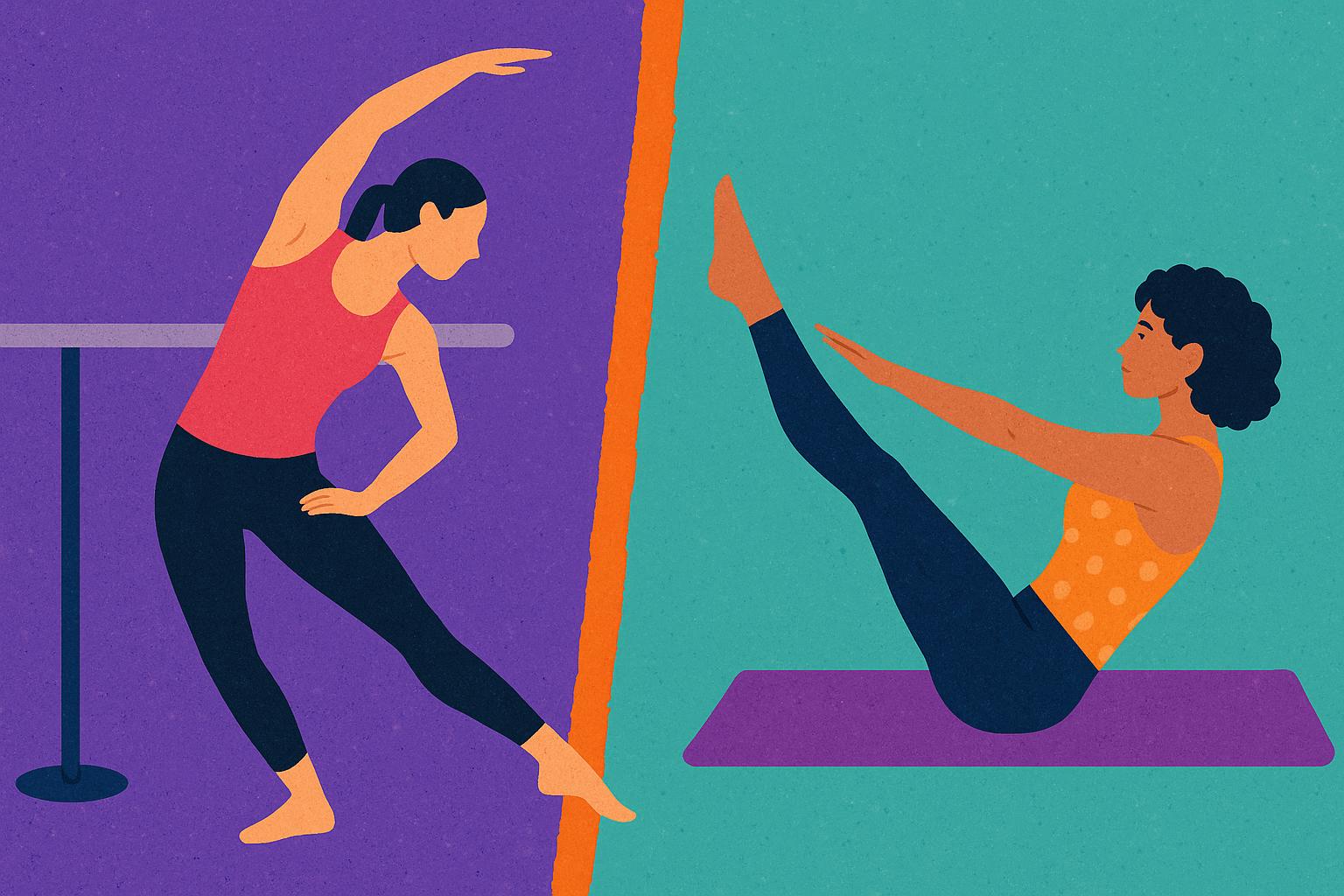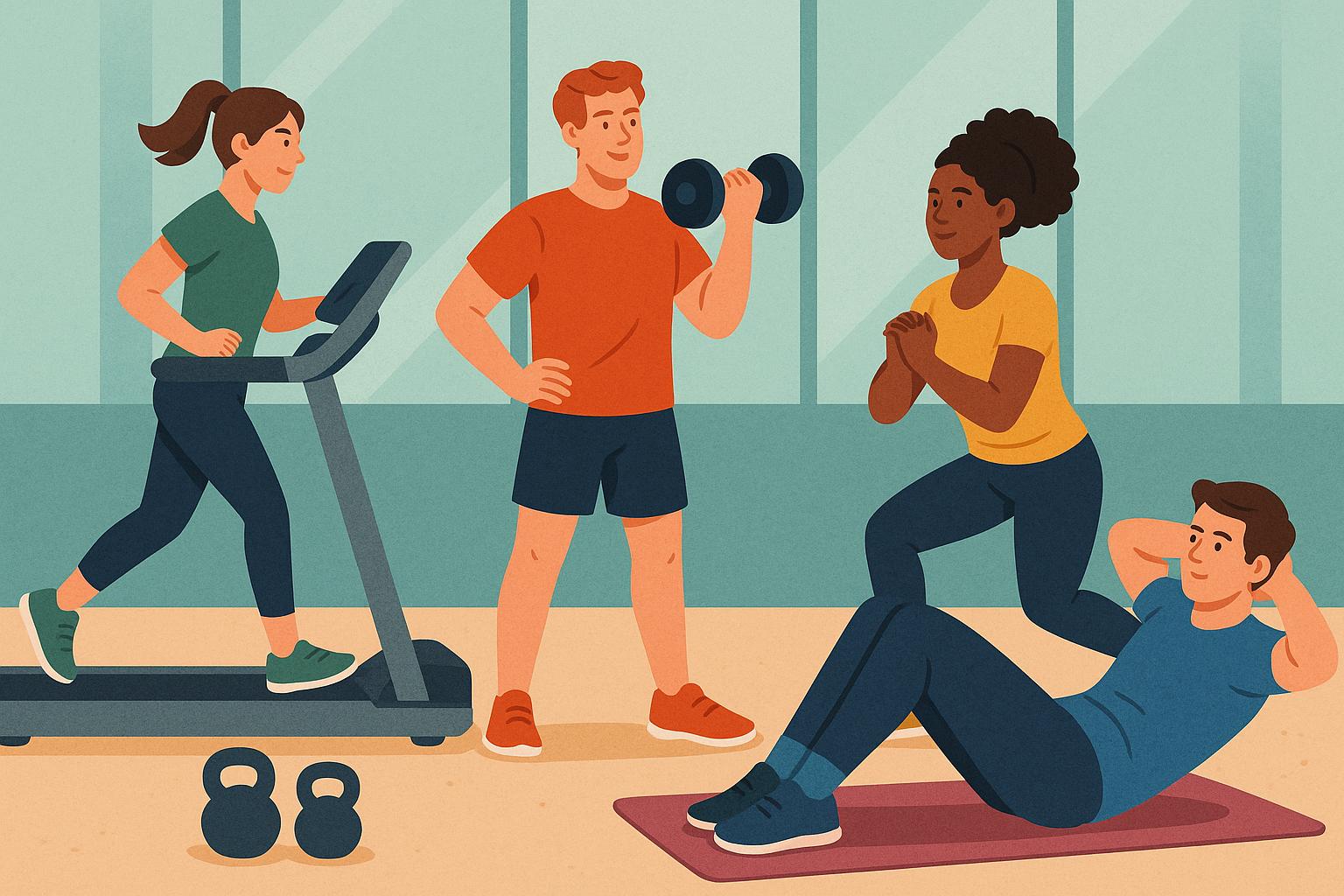When it comes to building a strong, sculpted core, there are two powerhouse workout methods that stand out: Barre and Pilates. Both have gained widespread popularity for their ability to tone and tighten the muscles, but the question remains: which one truly builds a better core? While both offer unique approaches to strength and flexibility, understanding the key differences between Barre and Pilates can help you decide which one might work best for you. In this article, we will dive into the distinct principles of each, their benefits for core strength, and the overall fitness experience each one provides.
The Foundations of Barre: A Fusion of Ballet, Yoga, and Strength Training
Barre workouts originated from a blend of ballet, yoga, and Pilates, creating a low-impact yet high-intensity fitness routine that targets all major muscle groups, with a particular focus on the core, glutes, and thighs. The use of a ballet barre as the central prop adds balance and stability, allowing you to perform a series of small, controlled movements that engage deep muscle fibers. In many Barre classes, you’ll experience a combination of isometric holds, pulsing movements, and stretches to create long, lean muscle definition.
While Barre exercises are renowned for shaping the legs and glutes, its core work is highly effective as well. Barre focuses on engaging the deep abdominal muscles through various movements that require balance and stability, such as planks, crunches, and standing core exercises. The added challenge of maintaining stability while performing these exercises forces the abdominal muscles to contract and engage, promoting strength and endurance.
One of the biggest benefits of Barre when it comes to core work is its ability to tone and tighten the entire midsection, especially the transverse abdominis – the deep muscle that helps support your spine. The controlled movements in Barre prevent over-exertion of the muscles, promoting long-term core engagement that leads to improved posture and stability.
Pilates: The Mind-Body Approach to Core Strength
Pilates, developed by Joseph Pilates in the early 20th century, is a highly focused, low-impact exercise system designed to strengthen and align the body. The central principle of Pilates is the engagement of the “powerhouse” – the muscles of the core, including the abdominals, lower back, and pelvic floor. Pilates exercises emphasize breath control, concentration, and precision, requiring the mind to be fully connected with the body’s movements. It’s this mind-body connection that makes Pilates an incredibly effective workout for building core strength.
In Pilates, core strength is not just about achieving aesthetic results but about creating functional strength that improves posture, balance, and overall body alignment. The exercises often involve slow, controlled movements that require holding challenging positions and focusing on engaging the deep muscles of the core. Pilates is widely known for its ability to transform not just the appearance of the abdominal muscles but also the function of the entire core region. Whether performed on a mat or using equipment like the reformer, Pilates targets the core from multiple angles, promoting both strength and flexibility.
Pilates exercises such as the hundred, leg circles, and roll-ups are specifically designed to build endurance and strength in the core muscles. The combination of flexion, extension, and rotation challenges the abdominal muscles in different ways, helping to achieve a well-rounded, strong core. Unlike Barre, Pilates includes movements that work the core through a full range of motion, incorporating both static holds and dynamic movements to engage the muscles in varied ways.
Core Strength: A Closer Look at the Mechanics
To understand which workout is better for building a core, it’s essential to look at how each one targets the core muscles. While Barre workouts focus on smaller, isometric movements that engage the deep core muscles through stabilization, Pilates offers a more dynamic approach that includes both static and dynamic core work.
In Barre, exercises like the plank, glute squeezes, and oblique twists work by forcing you to hold a position and engage your core for extended periods. These movements don’t typically involve heavy resistance but instead focus on creating muscle fatigue through repetition. The result is a toned and strong core that can help with posture, stability, and overall body control.
On the other hand, Pilates uses a wider variety of movements to challenge the core muscles, including both flexion and extension. Pilates routines incorporate movements such as leg raises, sit-ups, and spinal rotations to target the upper and lower abs, obliques, and lower back. Pilates tends to involve more full-body movements, with a particular emphasis on building strength in the deeper layers of the abdominal muscles and improving spinal alignment.
Both Pilates and Barre are incredibly effective for building a strong core, but the difference lies in their approach. Barre’s isometric movements are great for endurance, while Pilates emphasizes flexibility and dynamic strength, offering a well-rounded approach to core stability.
Which One Is Right for You? Tailoring Your Core Workout
When deciding between Barre and Pilates for building core strength, it’s important to consider your individual fitness goals and preferences. Both workouts are low-impact, making them suitable for people of all fitness levels and ages. However, they do have distinct qualities that could make one more appealing depending on your goals.
If you’re looking for a challenging, full-body workout: Pilates may be a better option. Pilates incorporates a variety of core exercises that engage the entire body, including flexibility, balance, and strength. If you enjoy a mental challenge, Pilates offers a unique mind-body connection that helps with body awareness and overall fitness.
If you prefer a combination of strength and toning: Barre is an excellent choice. While Barre is effective for core strength, its additional focus on sculpting the legs, arms, and glutes makes it an all-around toning workout. The controlled movements and smaller pulses help to refine muscle tone and add definition to the body.
If you’re looking to improve posture and spinal alignment: Pilates takes the lead. Its focus on spinal alignment and postural strength is especially beneficial for those with back pain or poor posture. Pilates movements emphasize controlled, flowing motions that help lengthen the spine and strengthen the muscles surrounding it.
The Verdict: Barre vs Pilates for Core Strength
So, which one builds a better core? It really depends on your goals. If you’re looking for a workout that targets core endurance through small, controlled movements and tones your entire body, Barre is a fantastic choice. The long, lean muscles it creates and the balance it promotes are great for building core stability over time.
However, if you’re seeking a workout that offers a more dynamic range of movements, with an emphasis on flexibility, spinal alignment, and deep core strength, Pilates may be your ideal workout. Pilates focuses on building a functional core with long-term benefits for posture, balance, and overall strength.
Ultimately, the best core workout is the one that you enjoy most and can commit to consistently. Both Barre and Pilates are exceptional workouts that will leave you feeling stronger, more connected to your body, and confident in your core strength. Whether you’re a barre lover or a Pilates enthusiast, the road to a stronger core is paved with dedication, focus, and the right workout for you.
Embracing Core Strength: Building the Foundation for a Stronger You
Core strength isn’t just about aesthetics; it’s about building a foundation that supports every movement you make. Whether you choose Barre or Pilates, both offer unique pathways to a stronger, more stable core. The key is to stay committed to your fitness journey and incorporate consistency into your workout routine. With either Barre or Pilates, you’re setting the stage for long-lasting health, strength, and overall wellness.




